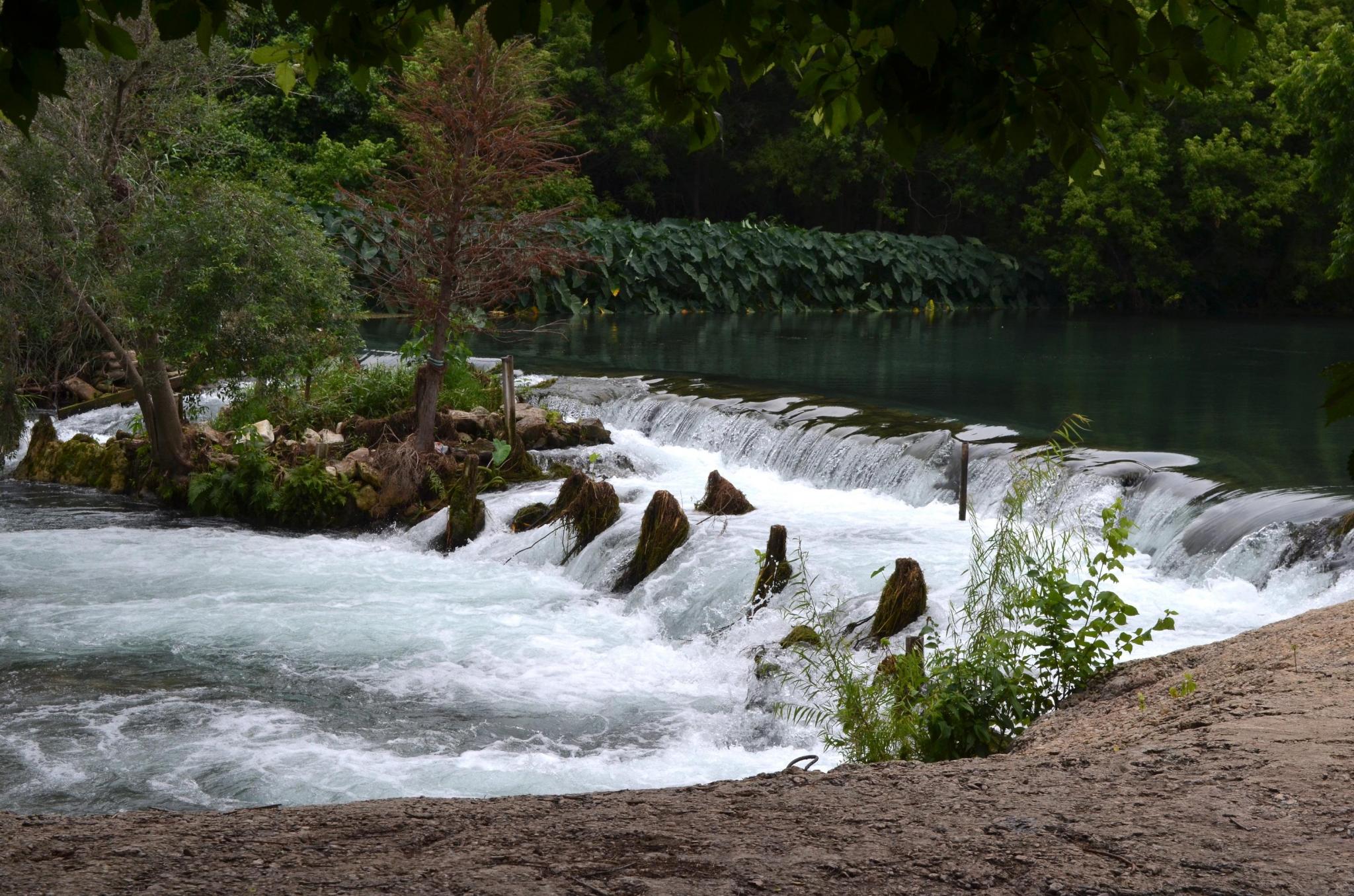
The San Marcos City Council is looking to conduct a new study on Cape’s Dam. Daily Record file photo
City Council eyes new Cape’s Dam study
The San Marcos City Council came out in favor of a new Cape’s Dam study during Tuesday’s work session.
For the first time in 2020, the council discussed the dam. City staff presented four options for discussion:
1. Removal. 2. Redesign & Rebuild. 3. Restoration or 4. Conduct another study.
Three of the councilmembers said they’re currently in favor of removing the dam: Melissa Derrick, Maxfield Baker and Mark Rockeymoore. The council, however, would like to receive more information through a new study on the dam and the mill race.
The council told staff that they’d like to have the following included in a new study: Hydrology, toxicity in the soil above the dam, water-level impact on the area’s trees, specifically cypress, effects on river during drought, water being diverted to the mill race during drought, stability of Thompson’s Island and if a crib-structure dam could replace the current dam. The council also recommended staff to look at what the U.S. Fish and Wildlife Service, U.S. Army Corps of Engineers and other permitting agencies would need to complete council’s vision for the dam.
An original study was conducted by Dr. Thomas Hardy in 2012 for the USFWS. Hardy gave multiple presentations to the city council in 2014 and 2015. In 2016, the council voted to remove the dam, however, the project was halted in August 2016. According to the council’s agenda packet, “due to the conflicting positions of USFWS and (Texas Historical Commission), and the Parks and Recreation competing interests of other interested stakeholders, the city determines that the best course of action is to suspend the USFWS permit process and further investigate removal, repair and replacement options.”
With a new study, mayor Pro Tem Ed Mihalkanin said he wants to ensure that the council doesn’t have a “thumb on the scale.”
“I want the outside person, or persons, to say ‘if you take out the dam, these are all of the consequences that are pertinent for the permitting organizations,'” Mihalkanin said. “And if you rebuild the dam, here are the consequences that are going to be looked at and are going to be reviewed by the permitting agencies.”
Derrick, who said she’s in favor of removing the dam, wants to ensure the health of the river moving forward.
“We were all united (seven years ago) and then came the dam,” Derrick said. “Now we have a divided community. We have a lot of hostility. We have friendships that have been lost. We have partnerships that used to work together to clean the river, they’re no longer working together. And I think, at the end of the day, we all want the health of the river. But I think to look at it from just a perspective of ‘how you can enjoy the river’ and those types of things — Kayaking and swimming — that’s secondary to the health of the river. If you don’t protect the health of the river, you won’t have the river anymore … I think by diverting a third of the river’s water to the mill race is a detriment to the health of the river in the long run. And we can find ways to honor the historic nature of that site while still preserving the river and still providing an east side river park over to those residents over there that deserve one.”
With concerns arising about the potential study’s content, mayor Jane Hughson said she has no interest in repeating the previous study.
“I don’t want to, at this point in time, just remove the dam and not do anything,” Hughson said. “I was just reading the very beginning of Dr. Hardy’s study and it was almost like it was assumed ‘let’s remove the dam and by the way it’ll be better for the (wildlife) species,’ instead of, ‘oh, we’ve got a problem now with the species not surviving. What would be the solution?’ So, what I would like to see is a study telling me, ‘Can we get rid of what’s causing the problem and then put in a (crib or weir structure) I know it allows water to flow so you’ve got water flowing through that’s going to be better for the species, which we got from Dr. Hardy’s report, but yet still maintain the mill race?'”
Hughson added that she’d like the mill race to continue to be used because many San Marcos citizens learn to canoe and kayak, and serves as a use for Wounded Warrior projects.
Moving forward with a study would be a several month process, City of San Marcos Director of Parks and Recreation Drew Wells said. The city would need to draft a request for proposal or request for qualifications then the city would define what it wants studied, Wells said. The city would solicit proposals from qualified consulting firms to conduct the study. The council would have to approve the firm chosen by city staff.
The city has $174,628 remaining of the $250,000 that was originally funded for the Cape’s Camp Improvement and Dam Project.











